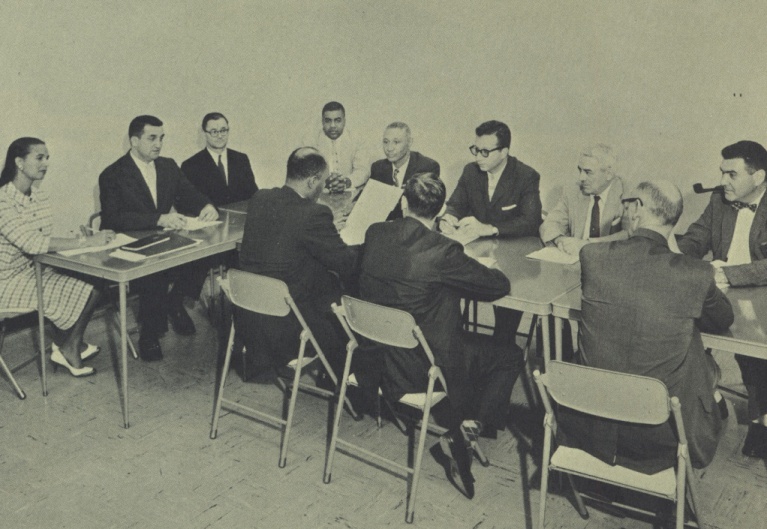Ludlow Community Association
An Experiment in Controlled Integration

In 1956, an explosion disturbed the usually quiet suburban neighborhood of Ludlow. Someone had planted a bomb in the garage of John G. Pegg, an African American lawyer who was building a new house on Corby Road. The racial attack sparked a biracial movement in this pastoral corner of Cleveland and was one of the first incidents that brought the neighborhood together to support integration.
Ludlow straddles the border between Cleveland and Shaker Heights, bounded by Van Aken Boulevard, Milverton and Livingston roads, South Moreland Boulevard, and South Woodland Road. This area of curvilinear streets corresponds with the Ludlow Elementary School district in the Shaker Heights City School District. In the 1950s and 1960s, Shaker Heights was among the nation's most affluent suburbs and was known for its quality of education. As a result of this prestige, more families wanted to move into the school district. Adjacent to the Mt. Pleasant neighborhood of Cleveland, which already had a large black population, Ludlow's location invited the attention of aspiring African American homeowners who hoped to obtain better housing. As in many suburban neighborhoods in the United States at the time, the arrival of the first black families unsettled many white homeowners. Realtors stopped showing houses in Ludlow to whites and warned those who still lived there that their property values would decrease as more African Americans moved in. Accordingly, many whites began scrambling to leave the neighborhood.
What makes Ludlow's story different is that a determined contingent of its people decided to take an active stance against this "white flight." They founded Ludlow Community Association (LCA) in 1957, a reflection of a newfound communal goal to purposefully and proactively integrate the neighborhood. The founders knew this would not happen without a fight, as Shaker Heights's housing and deed restrictions, which dated back to the time of the Van Sweringen brothers, had been built around policies of exclusivity--and exclusion. In order to integrate Ludlow and effectively work around these restrictions, LCA focused its efforts on real estate. However, LCA did not attack the issues of integration in a conventional way, and began to host multiple open houses to white families only. Ludlow had a steady flow of black house buyers, but lacked white interest in real estate, so LCA contended it was necessary to get white families to move back into Ludlow to counteract white flight. LCA soon aggressively fought with realtors to help dictate who would buy the houses with recent "For Sale" signs. This approach to integration was very controversial, inviting protest from the NAACP--but it succeeded in engineering an integrated neighborhood for at least a generation.
The Ludlow Community Association hosted an array of fundraisers and events to support its real estate campaigns. Many were hosted at Ludlow Elementary, but others were held at bigger venues. One of the most significant fundraisers included the jazz singer Ella Fitzgerald performing at Severance Hall, and many movie events at Colony Theater in Shaker Heights. All of these activities were highly organized and reflected LCA's integration efforts: an orderly and stable community, even in the "turbulent" 1960s. Ludlow became such a diverse and peaceful neighborhood that soon cities from all over the country were calling for advice about integrating their own communities. Not only did Ludlow set a national example for integration, the Moreland and Lomond neighborhoods in Shaker Heights soon followed suit. However, neither was as successful as Ludlow. Although the Ludlow neighborhood is now home to an approximately 85 percent black population, the efforts of the Ludlow Community Association assured that the neighborhood never suffered the wrenching shifts that brought panic and disinvestment in so many other communities.
Audio
Images






